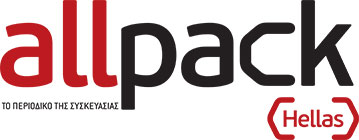PE: The rise of EUR 230/t in the April C2 contract dictated the route taken by LDPE films: prices namely climbed across the board. Negotiations were relatively tough, and some converters shut down over the Easter holidays to extricate themselves from the price spiral. In April, energy cost increases were once again factored in, even though, in reality, they declined slightly. At least the reports of forces majeures and maintenance shutdowns tend to stay low, so European production managed to largely meet the demand. It was just unfortunate that, because of the problematic logistics situation, imports did not arrive as hoped – and consequently did not lead to any easing of prices. For May, the C2 price has turned around, recording a fall of EUR 70/t. Also, because the energy cost increases have already been factored in, all the signs point to a rollover, with a price plateau likely to form in May – especially also with pipe grades. The increased arrival of imports should strengthen this trend, so that buyers should not have to worry about their contracts being met in May. On the other hand, the war in Ukraine is causing further uncertainty on the market. Summing up, this means that all players will continue to proceed cautiously until the situation improves.
PP: The massive rise of EUR 225/t in the C3 reference price for April propelled notations for polypropylene to record heights. Producers attempted to pass on the C3 rise as well as their higher energy costs. Converters resisted, however, especially as energy prices started to come down as the month progressed. With buyers staging a de facto order boycott, PP notations began to crumble. On the whole, demand was slack. Automakers shuttering production lines had an impact on the injection moulding segment, and compounders adapted their output to the weaker demand. Buyers of film grade also held back purchases, hoping for lower prices in May. With the EUR 65/t decline in the C3 contract for May setting a signal, market watchers expect that at least large accounts will be able to negotiate better terms. For smaller accounts, they are sceptical, however, as producers will try to recoup the increases they had to forego in April. Over the month, the PP rally could very well end, levelling off prices.
PVC: The upward trend continued unabated in April 2022. There was also little change in the reason given for this – prices for the base material were being driven up by higher costs (C2: up EUR 230/t) and the limited supply situation. In light of the increasing shortage, producers were also able to add on an energy cost component. Compounds also became more expensive in the slipstream of hikes for the base material and additives. And what is to be expected in May? Further increases are on the horizon. In the case of compounds, prices will then have been moving exclusively in the same direction for a full two years, and even base materials will only have experienced two short rollover breathers from the upward trend over this entire period. In May, producers will once again cite limited availability as the reason for renewed upticks. In view of limited supplies, the C2 contract development has once again become a minor concern.
Styrenics: The sharp increase in styrene costs in April (up EUR 360/t) drove all styrenics prices to new record highs. As for ABS, the prices of the other components, butadiene and CAN, shot up by EUR 200/t and EUR 400/t, respectively.
In addition to passing on feedstock costs, most producers of PS, EPS and ABS also added an extra component to absorb energy costs, which have also risen sharply. However, as energy costs declined again during the course of the month, some producers revised the extent of the premiums. As a result, the price range of the agreements was quite wide, especially for PS and ABS. The supply situation for PS and EPS was quite tight, due in particular to the limited availability of the precursor styrene. ABS was more readily available – the commissioning of new production capacities has brought relief to a market that had long been undersupplied. Also, demand weakened because many processors put brakes on their orders in view of the recent peak prices. Apparently, several had increased their stocks in anticipation of a price rally. Meanwhile, demand for EPS remained quite high, with processors buying all they could get. Further price increases for styrenics are on the horizon after the styrene reference for May went up by another EUR 84/t. In ABS components, ACN also rose by EUR 14.50/t and butadiene recorded a rollover.
PET: Following a rather turbulent March, the feared continuation of stark price increases on the European PET market did not materialise in April. Previous signs of panic over volumes subsided very quickly, because, even though demand was livelier than before – as is normal at the start of the season – overall ordering remained significantly below expectations.
The mood among consumers deteriorated considerably as a result of the many uncertainties affecting the market, and is now even worse than during the lockdowns of the past two years. At the same time, oil prices trended down, and there were reports of the potential arrival of PET imports from Asia in May and June, which led to a certain easing of tension among buyers. Consequently, there were only occasional catch-up price increases, especially at the lower end of the range. In structural terms, the ever-more-complex situation led, in the course of the first quarter, to significant differences in contractual conditions. At present, tough individual negotiations tend to be the most frequent outcome, and it will probably take some time until the right, more generally valid, models take shape for future contracts. For the time being, comparability of quotations should therefore be treated with caution, and a readjustment based on each individual case should possibly be recommended. For May, there are indications of a slight downward pressure on prices. The PX reference contract is expected to roll over in April after the jump in March, so there should be no cost pressure from the feedstock side. The production situation looks largely stable. Apart from that, imports are expected to arrive from Asia in May. The big unknown, and thus what will tip the scales, is how demand will develop. At present, it looks rather subdued. Accordingly, the picture is likely to show somewhere between a rollover and a small reduction.
For more than 35 years, PIE has been an invaluable source of information for European plastics industry decision makers – a quick, yet in-depth look at the development of plastics markets and polymer prices. Available online 24/7 and as a printed newsletter twice a month. To read the entire report, go to www.pieweb.com and sign up for a 48-hour free trial!

































